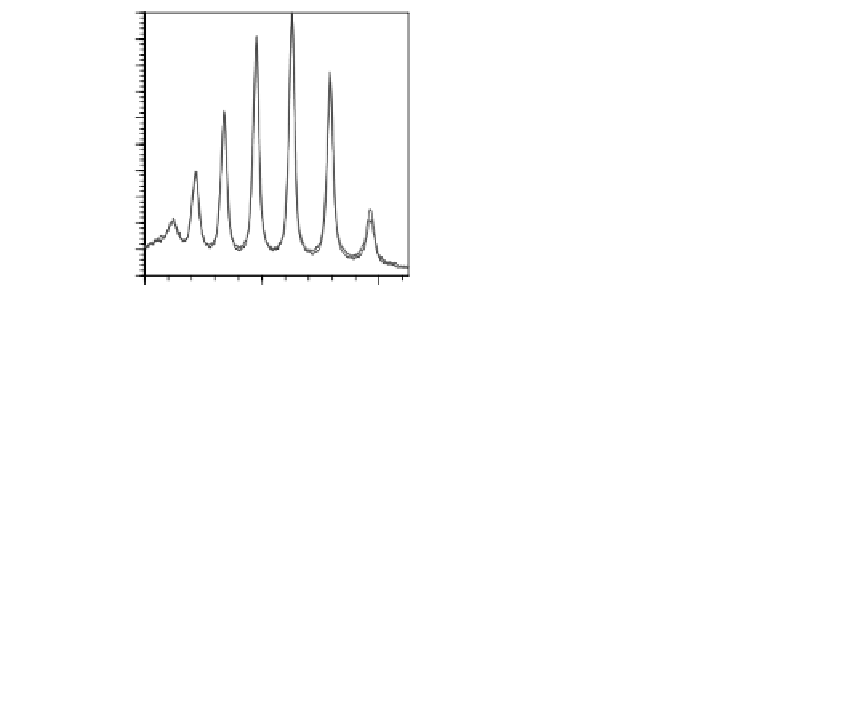Biomedical Engineering Reference
In-Depth Information
1
1
0.9
0.9
0.8
0.8
0.7
0.7
0.6
0.6
0.5
0.5
0.4
0.4
0.3
0.3
0.2
0.2
0.1
0.1
0
0
675
775
875
675
775
875
Wavelength (nm)
Wavelength (nm)
0.6
0.6
0.4
0.4
0.2
0.2
0
0
−
0.2
−
0.2
−
0.4
−
0.4
−
0.6
−
0.6
675
775
875
675
775
875
Wavelength (nm)
Wavelength (nm)
FIGURE 11.5
Photoluminescence spectra of a porous silicon microcavity biosensor in the presence and absence of bacterial cell
lysates. Top: overlays of spectra for sensor alone following derivatization with TWTCP and glycine methyl ester
with sensor photoluminescence following incubation with cell lysates from Gram-(
) bacteria (
Bacillus subtilis
,
) bacteria (
Escherichia coli
, right). The spectra in the bottom panels in each case are the difference
between spectra obtained in the presence and absence of bacterial cell lysates.
left) or Gram-(
(and still remains) to fully understand and control the properties of this material. Two con-
cerns were of paramount importance: first, whether the photoluminescent devices we pro-
duced would be capable of harboring larger probe molecules and binding larger targets;
and second, whether a secondary assay could be developed to correlate optical biosensor
response with the amount of material specifically entrained in the pores (either covalently
or noncovalently). Research in both these directions in the Rochester biosensor group was
driven primarily by Dr. Lisa DeLouise; what follows in this section is a summary of the
results of her research.
With regard to the question of molecular size, this was not as straightforward a problem
as it might initially appear. While early efforts had demonstrated that high molecular-
weight DNA sequences (such as lambda bacteriophage) could be efficiently captured,
oligonucleotides are inherently flexible and rod-shaped. Therefore, their “molecular size”
is not necessarily relevant to the problem of immobilizing and capturing peptides, pro-
teins, and antibodies. Initial experiments in our laboratories with the extracellular
domains of intimin and tir, two proteins critical to the infectious mechanism of enteropath-
ogenic and enterohemmorhagic
E. coli
,
24
were characterized by poor reproducibility. This
suggested that even these two relatively small proteins (12 kDa and 32 kDa, respectively)




